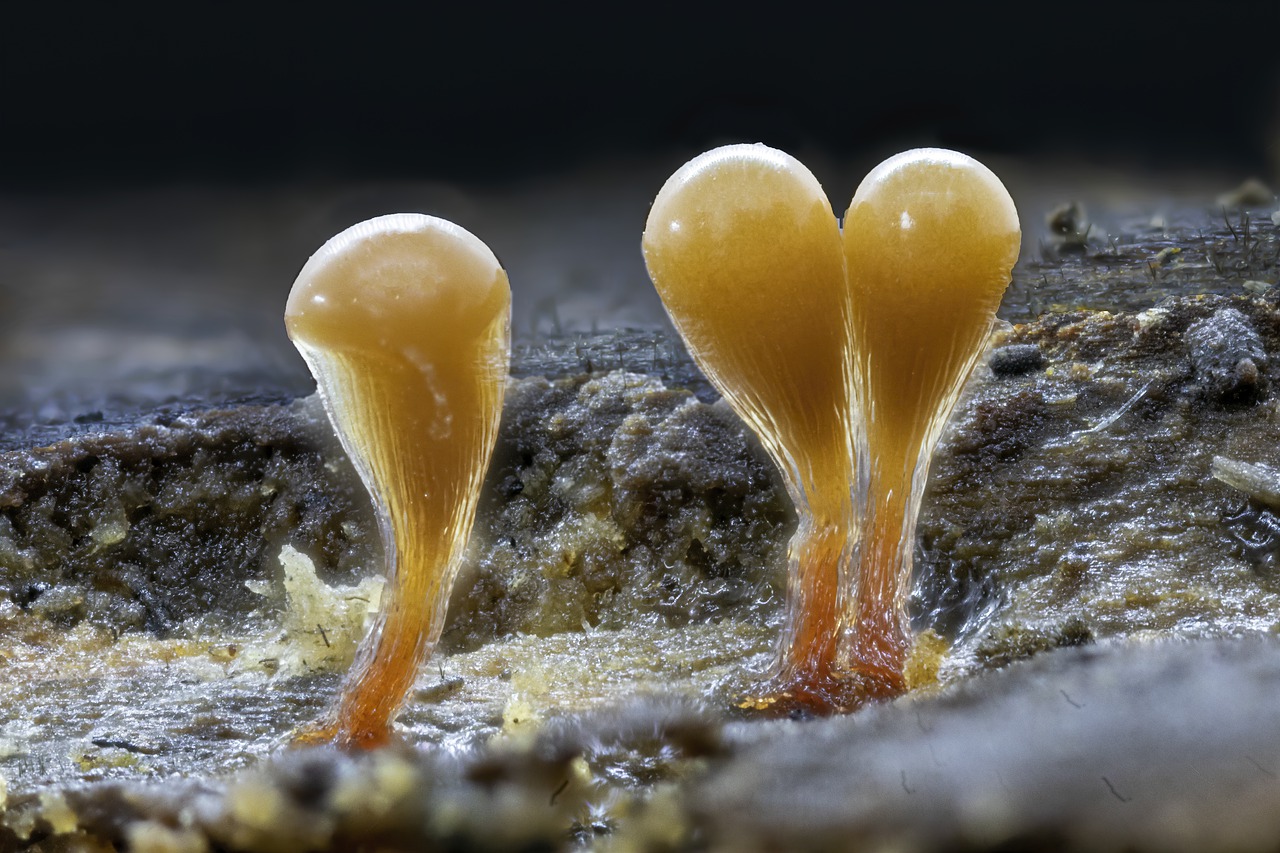
How To Prevent Mould Growth After A Flood
By: 911 Water Damage Experts
Figuring out how to prevent Mould growth after a flood is most likely the last thing on your mind. You’re probably still trying to wrap your head around the fact that your home and building materials are damaged.
While this can stop you from taking immediate action, it’s essential to focus on Mould growth early on. You’ve only got a 1-2-day window before it starts to take hold and wreak havoc.
What Is Mould?
Source: Pixabay
To understand just how serious Mould growth in a house can be, it pays to know what it is in the first place. Mould is the collective name for several different types of microscopic fungus. When they are left to their own devices, they can spread at a rapid pace.
Mould thrives in moist and damp environments, which a flooded home can be. However, you may also find that mould grows and thrives in kitchens and bathrooms where ventilation needs are not well taken care of.
The problem with mould is that it’s not fussy about where it grows. It will grow on wood, ceiling tiles, wallpaper, paint fabric, carpet, and more. It can be black, green, white, black, grey, yellow, or a variety of colours and cottony, fuzzy, velvety, or similar.
Is Mould Bad For Your Health?
One of the main reasons you’re going to want to prevent mould growth after a flood is that it’s bad for your health. When mould has a chance to spread, it can trigger severe allergic reactions and asthma attacks in people who are susceptible to allergens.
Mould exposure can also have more general side effects that impact many people, such as:
-Coughing
-Wheezing
-Breathing difficulties
-A sore throat
-Skin and eye irritations
-Sinus congestion and infections
-Nasal congestion
-Upper respiratory infections
How mould affects people can depend on their exposure, whether they already suffer from respiratory conditions, have a weakened immune system, are elderly, an infant, or a child.
What Homeowners Should Do After A Flood
Source: Pixabay
In the immediate hours after a flood has wreaked havoc on your home, there are several things you’re going to need to do. These include Mould testing and a Mould damage assessment. You can then move on to Mould remediation with the help of an expert team.
We’ve included some of the most appropriate steps to take immediately after a flood below.
Step 1: Take An Inventory Of Each Room
After a flooding event that has caused significant damage to your home, it’s easy to feel overwhelmed. Where do you even begin? Well, you can start by going room to room.
Write down a list of things that are damaged and information about their price, manufacturer, and where you purchased them if possible. Take as many photos as possible, as well.
All of this information will come in helpful for insurance purposes if you have insurance.
Step 2: Start Drying
Property damage is not always something you have to take care of immediately, but it is when it involves water. Start drying wet materials as quickly as possible with fans, dehumidifiers, and air conditioners.
Commercial machines are typically able to do a much better job, so don’t be afraid to call in flood damage restoration experts to handle the job for you. Remember, it takes just 48 hours for Mould to form and start spreading, so don’t delay beginning the drying process as soon as possible.
Step 3: Remove Anything Wet
The fewer opportunities you give to mould to form, the better. Therefore, as you’re starting to dry the room, remove anything wet like carpets and soft furnishings.
Most carpet and soft furnishings affected by flood water will need to be thrown away due to the dangers of unclean water.
You will also need to turn your attention to any porous building materials that are also wet.
Damp insulation and wallboards will need to be removed and disposed of as they pose a high Mould risk.
Step 4: Start Cleaning
When you’re left with what is essentially the bare bones of your room, you can start cleaning.
It’s important to use non-phosphate detergents as other varieties may feed the mould rather than get rid of it.
If you’re unsure how to clean a flooded room effectively, you can leave this job in the capable hands of a flood restoration team.
Step 5: Use Moisture Meters
Even if you think your dehumidifiers, fans, and air conditioning units are doing a great job drying out your home, using moisture meters is a good idea.
It can detect moisture content in your studs, which is helpful for knowing whether all the wood is dry before you start installing new insulation and closing walls.
How To Stop Mould From Spreading
If you haven’t managed to stop mould from forming, you can at least try to prevent it from spreading. There are many things you can do, such as:
-Sealing off rooms you are working on with plastic sheeting
-Sealing items to remove in airtight bags before moving them through other rooms
-Bagging and washing contaminated clothing
-Using the shortest path in and out of the home
Who To Call For Help After A Flood
When your home has been flooded, it’s not always easy to know who to call. It’s not like you can phone emergency services when there isn’t an emergency.
There are actually several experts you can rely on throughout the entire process.
Flood damage restoration experts can assist with removing and replacing building materials while also drying out your entire home.
If mould has taken hold, you may also bring in mould remediation experts to test, assess, and take care of mould growth in its tracks.
Fortunately, these experts tend to work together or within the same company.
You may also rely on builders to assist with any structural damage and plumbers to help with pipe-related flooding. Flood restoration experts and mould remediation teams often work 24/7 to respond to emergency jobs. You will always be able to access the help you need after a flood has ravaged your property.
Top 10 Causes Of Mould Infestation
Mold infestations can cause significant health issues and structural damage to homes. Understanding the primary causes of mold growth can help homeowners take preventive measures. Here are the top 10 causes of mold infestation:
High Humidity Levels
-
- Description: Mold thrives in environments with high humidity.
- Cause: Humidity levels above 60% provide the moisture mold needs to grow.
- Prevention: Use dehumidifiers, air conditioners, and proper ventilation to maintain indoor humidity between 30-50%.
Water Leaks
-
- Description: Persistent leaks in pipes, roofs, or windows create moist conditions ideal for mold.
- Cause: Leaks from plumbing, roof damage, or faulty seals allow water to seep into walls, ceilings, and floors.
- Prevention: Regularly inspect and repair plumbing, roofing, and seals to prevent leaks.
Poor Ventilation
-
- Description: Inadequate airflow can trap moisture in the air, promoting mold growth.
- Cause: Lack of proper ventilation in bathrooms, kitchens, and basements creates damp environments.
- Prevention: Ensure proper ventilation by using exhaust fans, opening windows, and installing vents.
Flooding
-
- Description: Floodwater can saturate building materials, providing a breeding ground for mold.
- Cause: Natural disasters, heavy rainfall, or burst pipes can lead to flooding.
- Prevention: Take prompt action to dry out flooded areas, and use sump pumps and drainage systems to manage water flow.
Condensation
-
- Description: Condensation on surfaces can contribute to mold growth.
- Cause: Temperature differences between indoor air and cold surfaces cause condensation.
- Prevention: Insulate pipes, windows, and walls to reduce condensation and use dehumidifiers to control moisture.
Damp Basements and Crawl Spaces
-
- Description: Basements and crawl spaces often have higher moisture levels due to poor drainage and ventilation.
- Cause: Groundwater seepage, inadequate drainage, and lack of ventilation in these areas.
- Prevention: Improve drainage around your home, seal foundation cracks, and install vapor barriers and ventilation systems.
Wet or Damp Clothing and Fabrics
-
- Description: Storing wet or damp items can lead to mold growth on fabrics.
- Cause: Leaving wet clothes, towels, or other fabrics in piles or closed spaces.
- Prevention: Dry clothes and fabrics thoroughly before storing and avoid leaving damp items in closed spaces.
Improperly Installed Insulation
-
- Description: Poor insulation installation can trap moisture in walls and ceilings.
- Cause: Insufficient or incorrectly installed insulation can lead to condensation and moisture buildup.
- Prevention: Ensure insulation is properly installed and that there is adequate ventilation in attics and wall cavities.
Organic Materials
-
- Description: Mold feeds on organic materials like wood, paper, and fabric.
- Cause: Moisture combined with organic materials creates a suitable environment for mold.
- Prevention: Keep organic materials dry and clean, and use mold-resistant materials where possible.
Neglected Maintenance
-
- Description: Failure to maintain and inspect your home regularly can lead to undetected mold growth.
- Cause: Ignoring small leaks, not cleaning regularly, and failing to address moisture issues.
- Prevention: Regularly inspect your home for signs of mold, leaks, and moisture problems, and address issues promptly.
FAQS About Mould Prevention
What is the first step in preventing mould after a flood?
-
- Answer: The first step is to remove all standing water as quickly as possible. Use pumps, wet vacuums, and buckets to get rid of excess water, then dry out the area with fans, dehumidifiers, and open windows.
How soon should I start mould prevention after a flood?
-
- Answer: Mould can begin to grow within 24 to 48 hours after a flood, so it’s crucial to start mould prevention efforts immediately.
What materials should be discarded after a flood?
-
- Answer: Porous materials such as carpet, carpet padding, upholstery, insulation, and drywall that have been soaked should be discarded, as they are difficult to thoroughly clean and dry.
Can I clean and reuse items that got wet during the flood?
-
- Answer: Non-porous items like glass, plastic, and metal can often be cleaned and disinfected. Porous items like fabric and paper should be discarded if they cannot be completely dried within 48 hours.
What cleaning solutions are effective against mould?
-
- Answer: A solution of one cup of bleach to one gallon of water can be used to clean non-porous surfaces. Commercial mould-killing products are also available. Always follow manufacturer instructions and ensure good ventilation.
How can I ensure proper ventilation during the drying process?
-
- Answer: Use fans, dehumidifiers, and air conditioners to promote air circulation. Open windows and doors if weather permits. Ensure that HVAC systems are professionally inspected before use.
Should I use a professional mould remediation service?
-
- Answer: If the affected area is large (more than 10 square feet) or if you are dealing with black mould, it’s advisable to hire a professional mould remediation service. Professionals have the expertise and equipment to handle extensive mould problems safely and effectively.
Can mould grow behind walls and under floors?
-
- Answer: Yes, mould can grow in hidden areas such as behind walls, under floors, and in crawl spaces. It’s important to inspect these areas thoroughly and address any moisture issues promptly.
How do I know if I have mould in my home?
-
- Answer: Signs of mould include musty odours, visible mould growth (which can appear as spots or discoloration), and an increase in allergy-like symptoms among occupants. If you suspect mould, a professional inspection can confirm its presence.
What long-term steps can I take to prevent mould growth?
-
- Answer: Maintain low indoor humidity (30-50%), ensure proper ventilation in moisture-prone areas (like bathrooms and kitchens), use mould-resistant products when building or renovating, and regularly inspect and maintain plumbing and HVAC systems to prevent leaks and condensation.
For more information on water damage feel free to call us at 1-833-WE-DRY-IT any time 24/7/365 all the time. We’re there when you need us!
Related Posts:
Hire the right mould removal company by asking these vital questions
15 interesting facts about mould
What causes mould damage and what you can do about it
Top common signs of water damage: here’s what to look for





Pingback: Burst & Damaged Pipes: How Leaks Can Cause Water Damage – Home Improvement